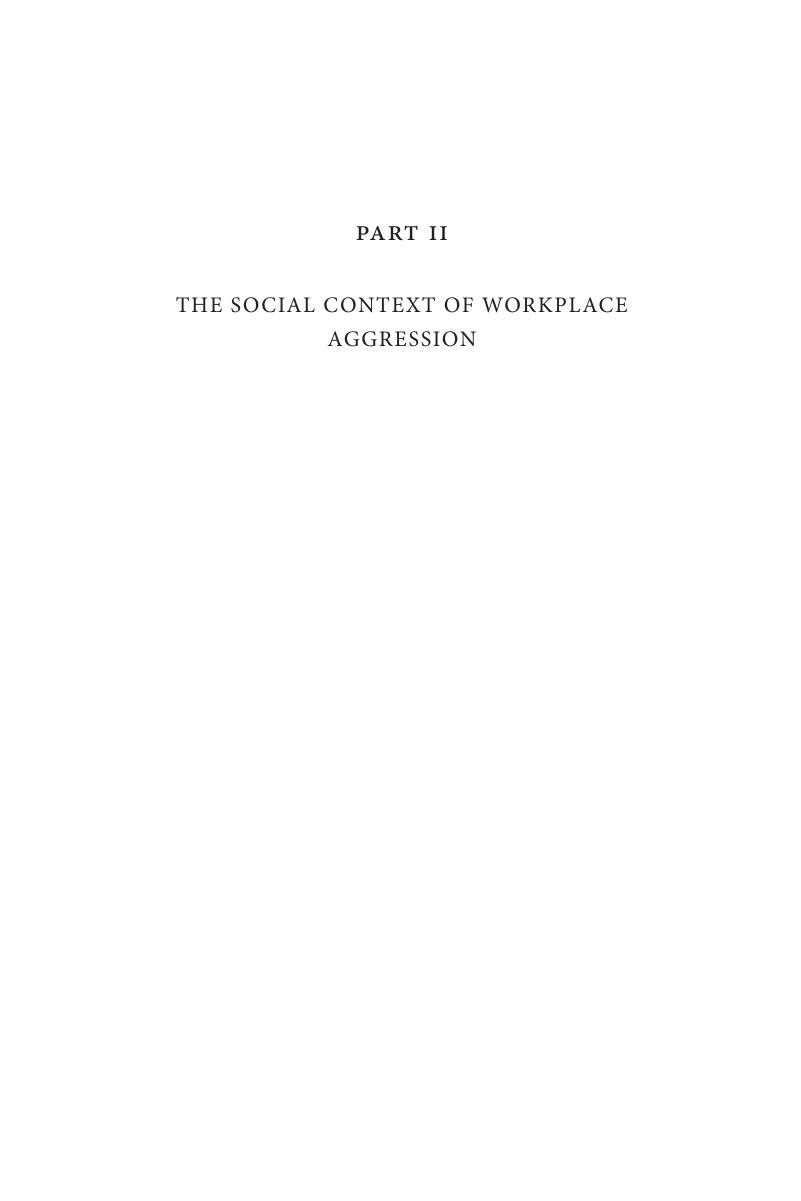Book contents
- Research and Theory on Workplace Aggression
- Research and Theory on Workplace Aggression
- Copyright page
- Dedication
- Contents
- Tables and figures
- Contributors
- Acknowledgments
- Introduction
- Part I The Measurement, Predictors, and Consequences of Workplace Aggression
- Part II The Social Context of Workplace Aggression
- Part III The Prevention of Workplace Aggression
- Index
- References
Part II - The Social Context of Workplace Aggression
Published online by Cambridge University Press: 16 March 2017
- Research and Theory on Workplace Aggression
- Research and Theory on Workplace Aggression
- Copyright page
- Dedication
- Contents
- Tables and figures
- Contributors
- Acknowledgments
- Introduction
- Part I The Measurement, Predictors, and Consequences of Workplace Aggression
- Part II The Social Context of Workplace Aggression
- Part III The Prevention of Workplace Aggression
- Index
- References
Summary

- Type
- Chapter
- Information
- Research and Theory on Workplace Aggression , pp. 91 - 268Publisher: Cambridge University PressPrint publication year: 2017

